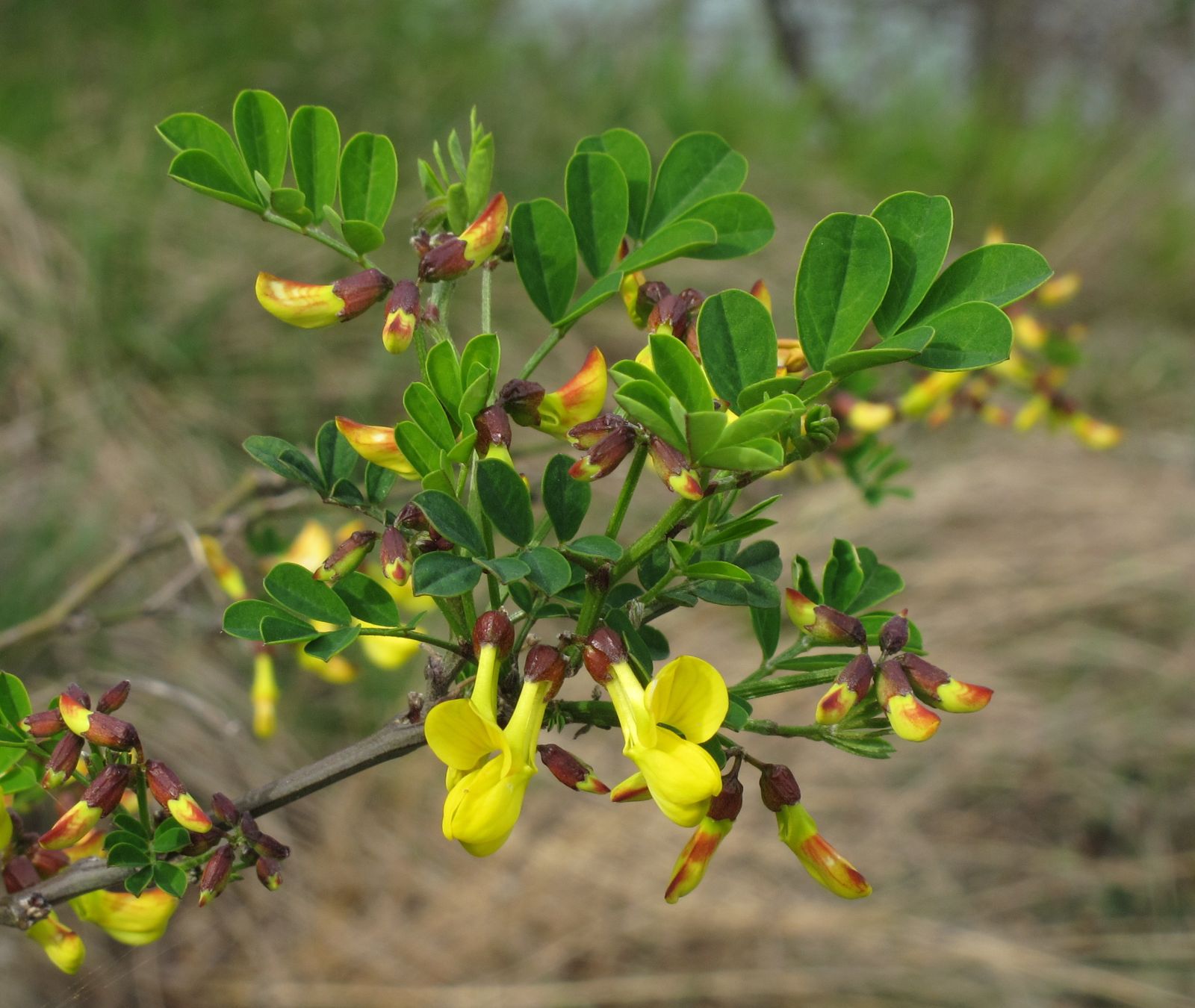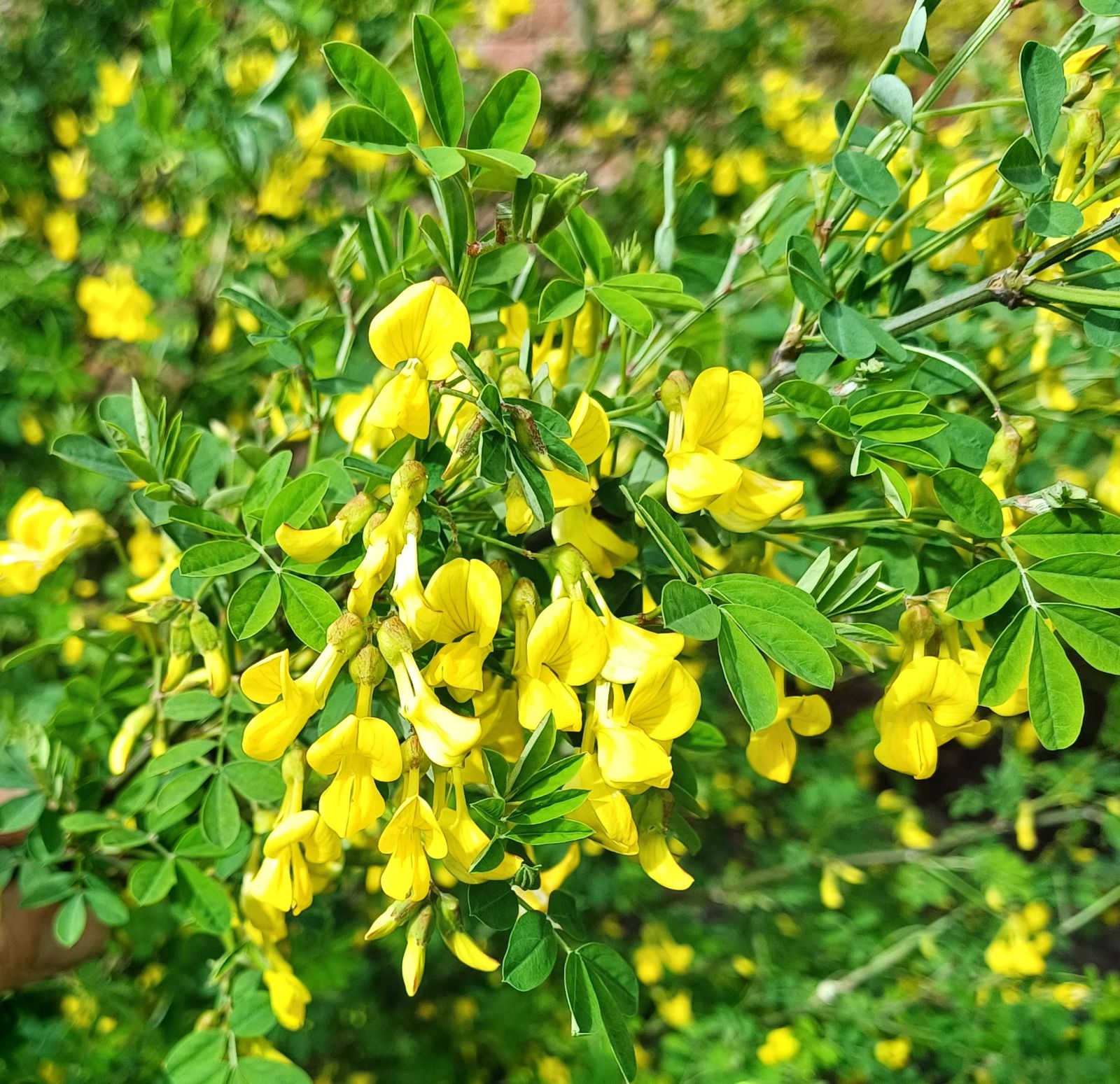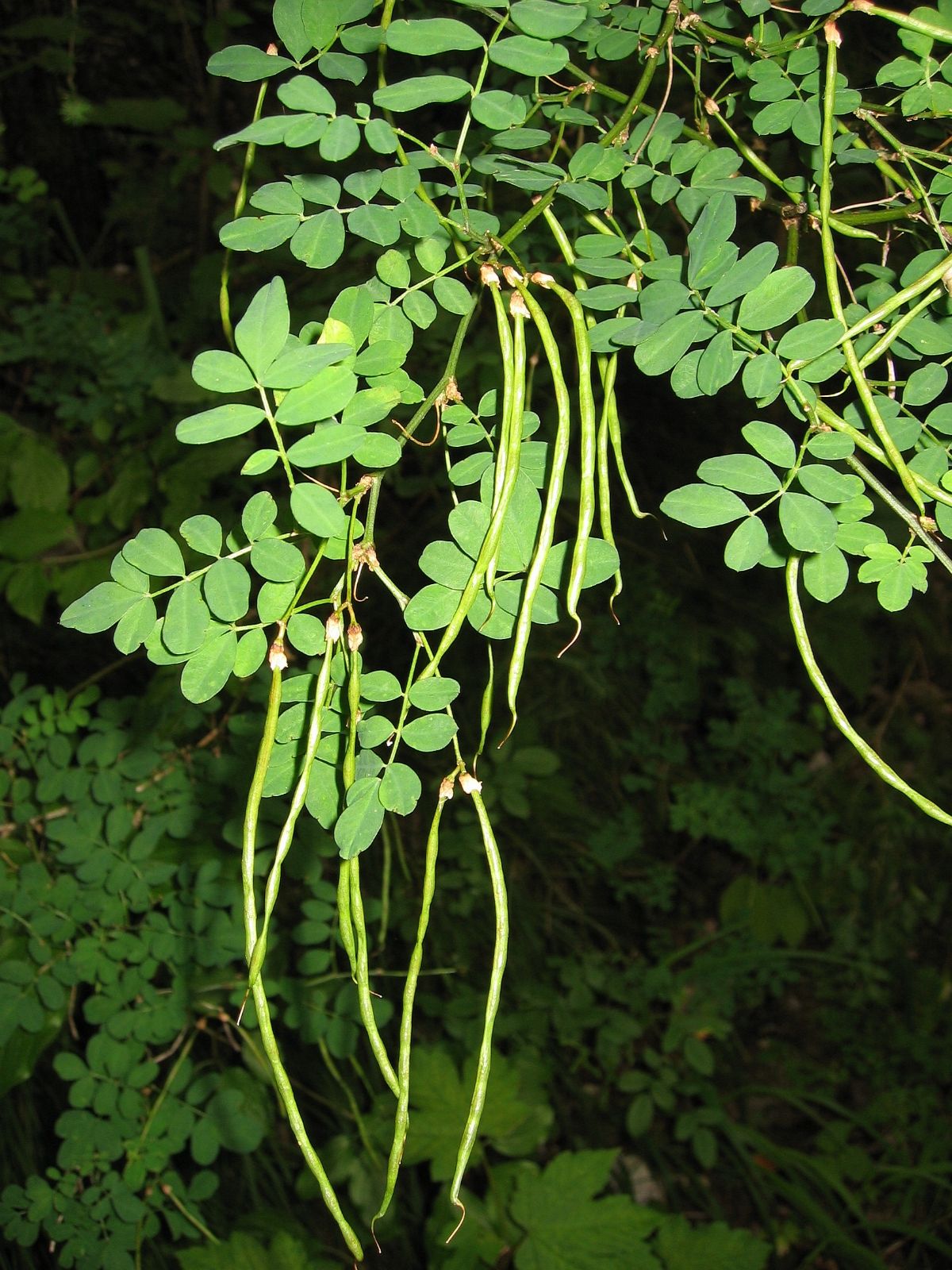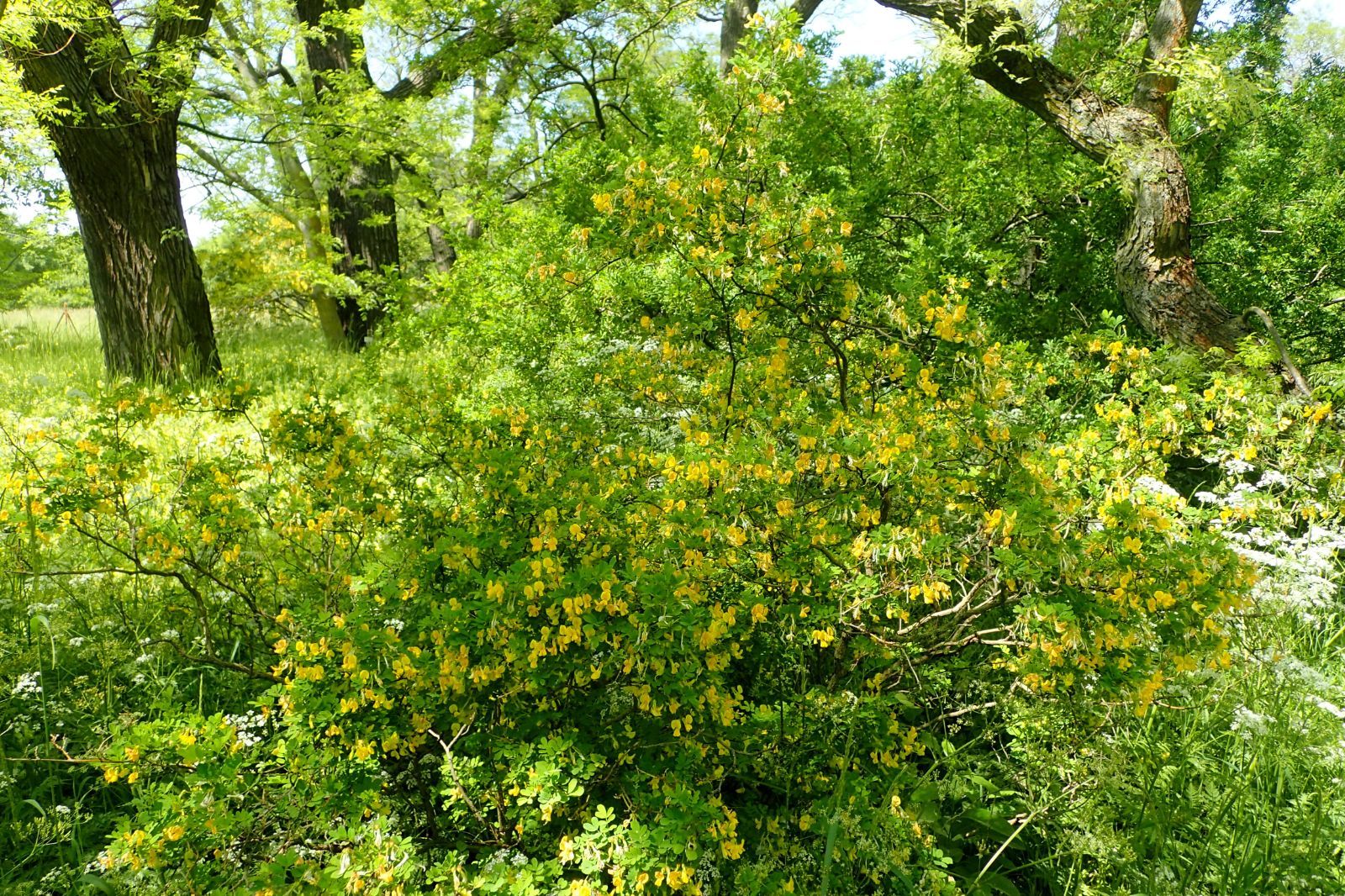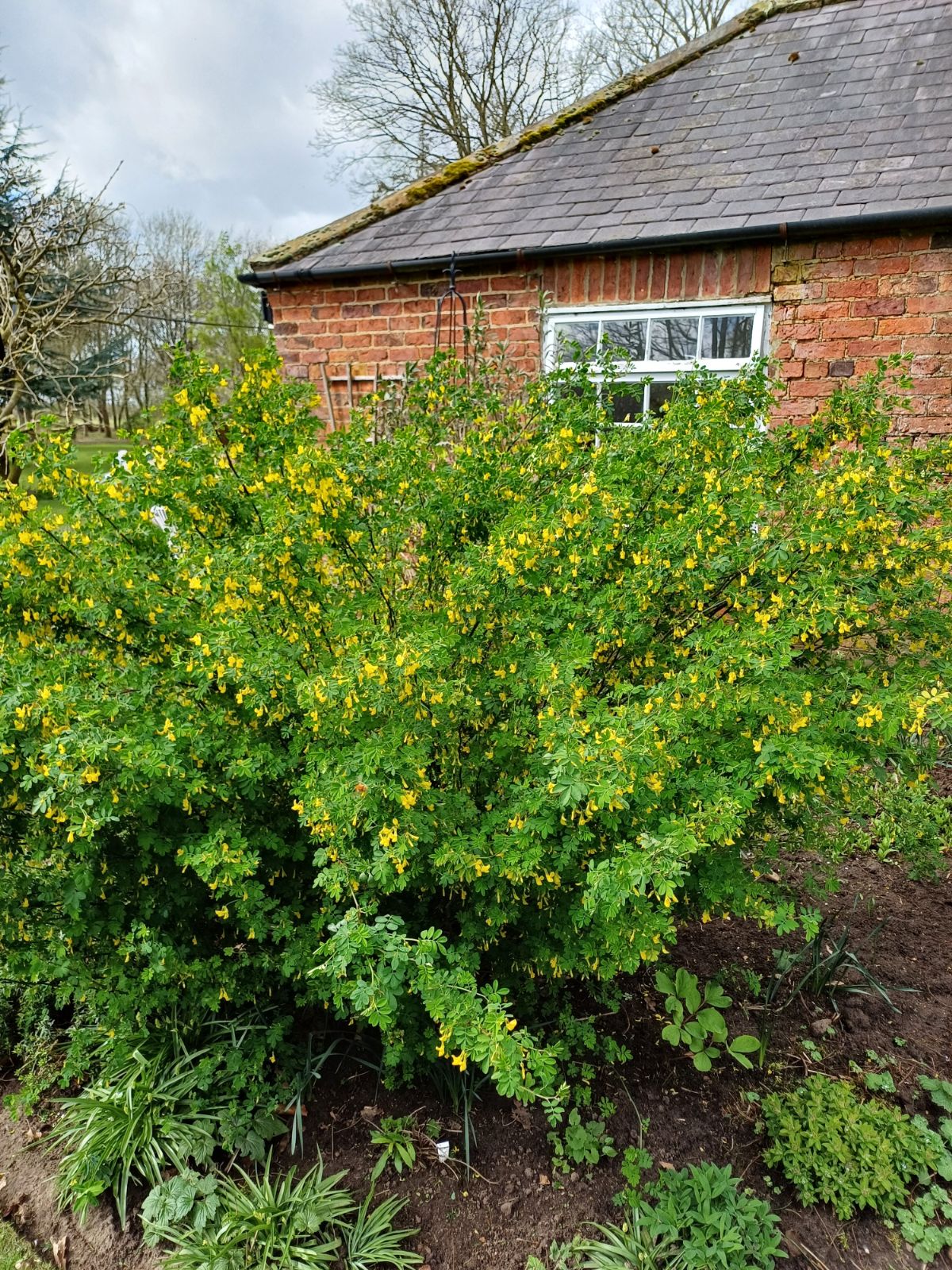Hippocrepis emerus
Sponsor
Kindly sponsored by a member of the International Dendrology Society.
Credits
Julian Sutton (2023)
Recommended citation
Sutton, J. (2023), 'Hippocrepis emerus' from the website Trees and Shrubs Online (treesandshrubsonline.
Deciduous shrub to 2(–3) m. Leaflets 3–9, 1–2 cm, obovate, glaucous, apex mucronate. Stipules 1–2 mm, free, membranous. Umbel 1–8-flowered. Corolla pale yellow, sometimes red-marked especially on backs of petals, 1.4–2 cm; banner claw 2–3 times calyx length. Fruit 5–11 cm, segments 3–12, 8–10 mm. (Description and range cover both subspecies, see main text and subsp. emeroides for further details.) (Tutin et al. 1968).
Distribution Albania Austria Belgium Bosnia and Herzegovina Bulgaria Cyprus Czechia Germany Greece Hungary Italy Lebanon North Macedonia Montenegro Norway Romania Russia Serbia Slovakia Slovenia Spain Sweden Switzerland Syria Tunisia Turkey Ukraine (Crimea)
Habitat Open woodland and hillsides.
USDA Hardiness Zone 7-9
RHS Hardiness Rating H5
Conservation status Not evaluated (NE)
The Scorpion Senna makes a long-flowering deciduous shrub, typically reaching 2 m in height and breadth, with a denser, bushier appearance than some comparable shrubby peas (eg. Cytisus scoparius). Helpfully, old and overgrown specimens will resprout from near the base if cut back hard (Huxley, Griffiths & Levy 1992). It suits sunny, well drained positions in much of our area apart from those with very cold winters or extreme summer drought. It is still sometimes seen listed as Coronilla emerus.
With its wide range in Europe and Asia, stretching from the Mediterranean basin and Black Sea area to some geographically and genetically isolated populations in southern Norway and Sweden (Lonn & Prentice 1995), hardiness probably varies a good deal in H. emerus, although hardier or more drought-tolerant strains seem not to have been explicitly selected. Two subspecies have been described, although they intergrade in Italy and the Balkans (Tutin et al. 1968). There is no obvious correlation between subspecies and hardiness.
Hippocrepis emerus is grown mainly for its flowers. In most cultivated material each inflorescence has about three flowers although forms with more would be desirable. The long claw of the banner is very noticeable, and some forms have a red mark or streak on the back of the banner, eyecatching in bud. While never smothered in flower, the long flowering season (typically May to October in Britain) makes it very worthwhile (Bean 1976). The flowers have the distinctive structure of legumes, with all but one of the 10 stamens fused to form a tube around the style, these sexual organs together making a brush enclosed within the two partially fused lower petals (the keel). There are two lateral petals (the wings) and a larger, hooded upper petal (the banner or standard). While bees, butterflies and flies visit them, only bees seem able to bring about pollination in this species (Aronne, Giovanetti & De Micco 2012), the visiting bee forcing the keel petals apart, pushing anthers and stigma up against the insect’s underside. Other insects (plus some bees) collect nectar from behind the flower, without working the mechanism.
The long, slender seed pods give added interest. A fanciful resemblance to scorpions’ tails inspires the species’ vernacular name. Like other Hippocrepis, Coronilla and related genera, the pods are lomentaceous, that is made up of single-seeded sections with seedless constrictions between. Unlike those species which give the Horseshoe Vetches their name, the seed-bearing sections and the seeds within them are more or less straight, with a rounded section, while the intervening seedless parts are flattened.
As a widespread European species it has been known to botanists and gardeners for many centuries. Named scientifically (as Coronilla emerus) by Linnaeus (1753), it was known to Clusius (l’Écluse 1601) as Colutea scorpioides humilior. Loudon (1844) believed it to have been in British gardens at least since 1596. He considered it ‘very beautiful’, noting that it ‘bears clipping pretty well, and would form a beautiful hedge’, as well as giving prices in British, French and New York nurseries. It is neither particularly rare nor very often seen in today’s gardens, sometimes offered by nurseries and in seed catalogues. Some examples of botanic gardens across Europe which grow it give an idea of its adaptibility to different climates: RBG Edinburgh (Spanish provenance – Royal Botanic Garden Edinburgh 2023) ; NTNU Ringve Botanical Garden, Norway (NTNU University Museum 2023); Hortus Botanicus Amsterdam (Italian provenance – Hortus Botanicus Amsterdam 2023); and ELTE Botanical Garden, Budapest (Hungarian provenance – Royal Botanic Garden Edinburgh 2023).
Despite its early introduction to the United States (see above), it is not often grown today, offered occasionally by seed suppliers. Tellingly, it is not included in Oregon State University’s rather comprehensive online listings of landscape plants (Oregon State University 2023), although it can certainly be grown in the Pacific Northwest (University of British Columbia 2023). Hardiness is clearly an issue in colder areas. Despite multiple accessions from Europe over more than 100 years, it is not currently in the Arnold Arboretum’s living collections (Arnold Arboretum 2023). However it is grown at the Morton Arboretum, IL, a stock which can be traced back to 1880 in historian Francis Parkman’s celebrated garden, very near the Arnold in the Boston, MA, area (Morton Arboretum 2023).
Generally a trouble-free plant, it can be propagated from seed or by softwood cuttings in summer (Huxley, Griffiths & Levy 1992)
subsp. emeroides (Boiss. & Spruner) Greuter & Burdet ex Lassen
Synonyms
Hippocrepis emeroides (Boiss. & Spruner )Czerep.
Coronilla emeroides Boiss. & Spruner
Umbels up to 8-flowered (versus to 5-flowered); segments of fruit more rounded (versus obtusely angled); peduncles longer than leaves (versus about equalling leaves).
This subspecies more or less replaces the type subsp. emerus in the southeastern part of the range given above, but a precise distribution for each is hard to ascertain from the literature, and the the two seem to intergrade, at least in Italy and the Balkans (Tutin et al. 1968). Plants labelled subsp. emeroides are grown at RBG Edinburgh (Turkish provenance – Royal Botanic Garden Edinburgh 2023), Gothenburg Botanical Garden, Sweden (Greek provenance – Gothenburg Botanical Garden 2023), and the University of British Columbia Botanical Garden, Vancouver (Italian provenance – University of British Columbia 2023). These records alone should dispel naive assumptions about the relative hardiness of the two subspecies.


